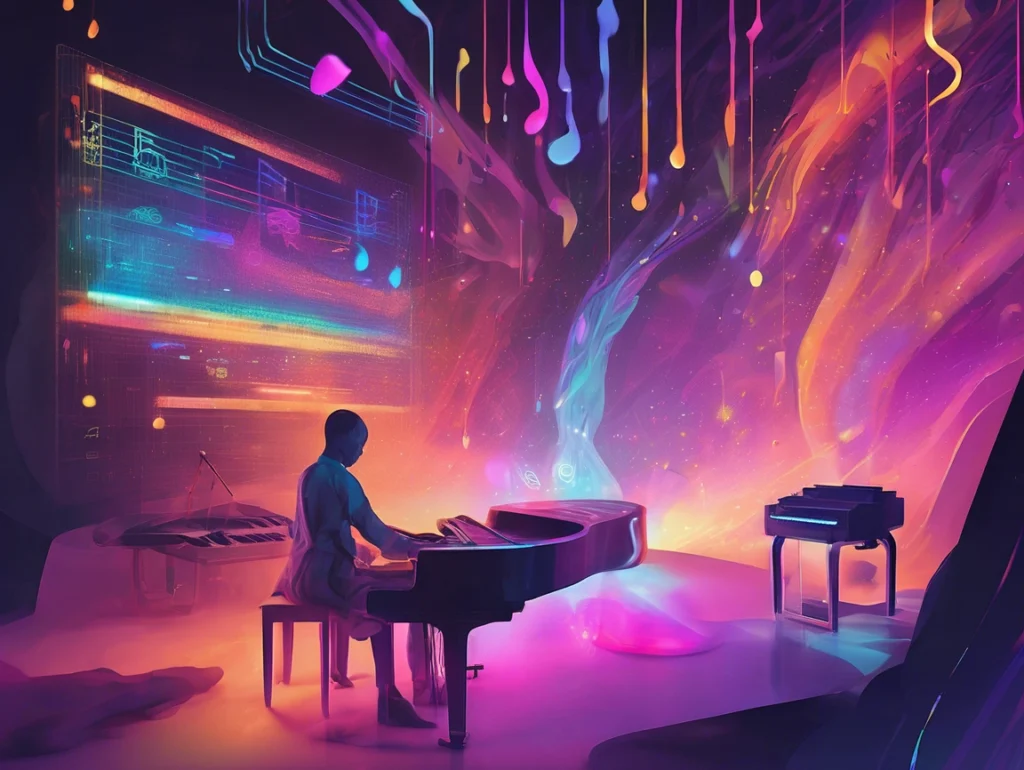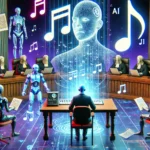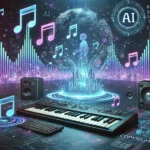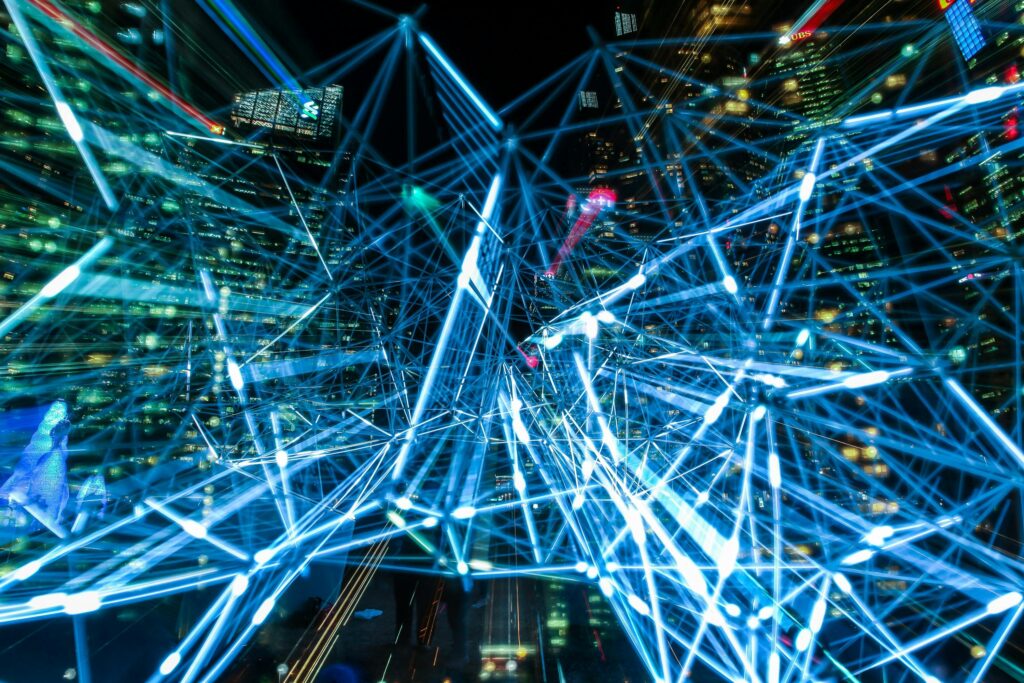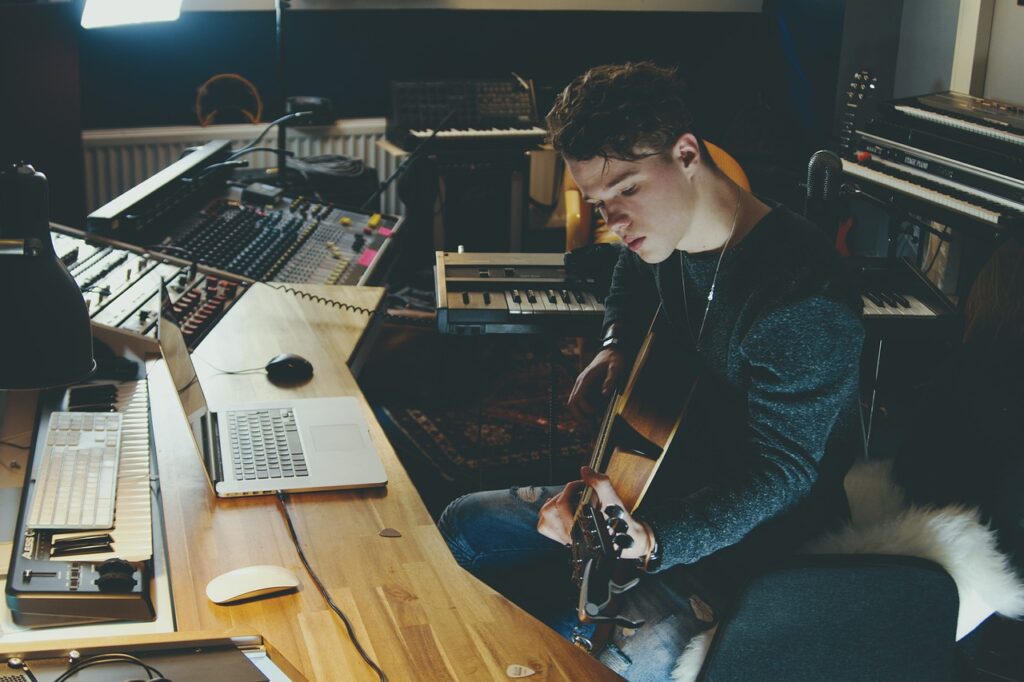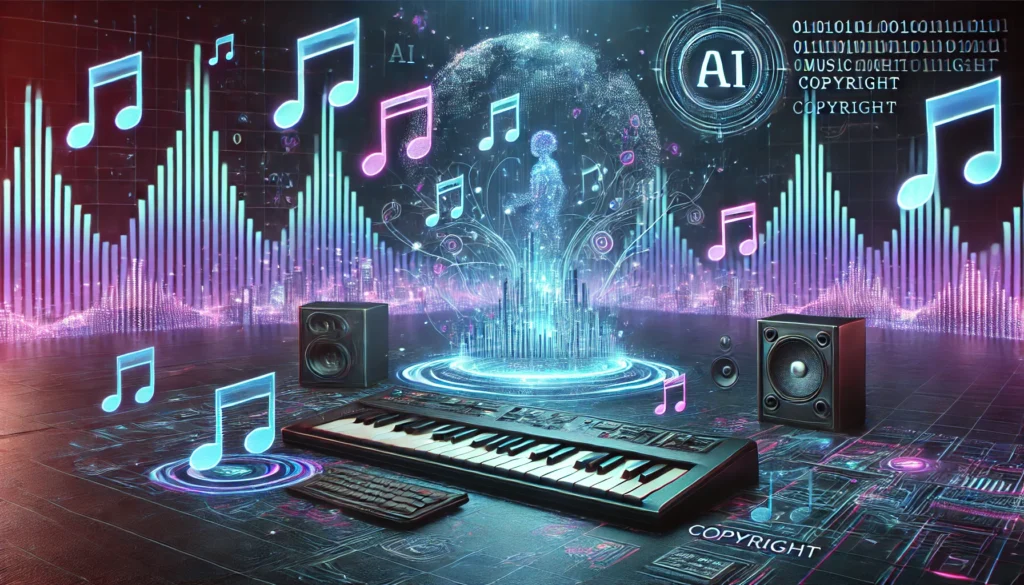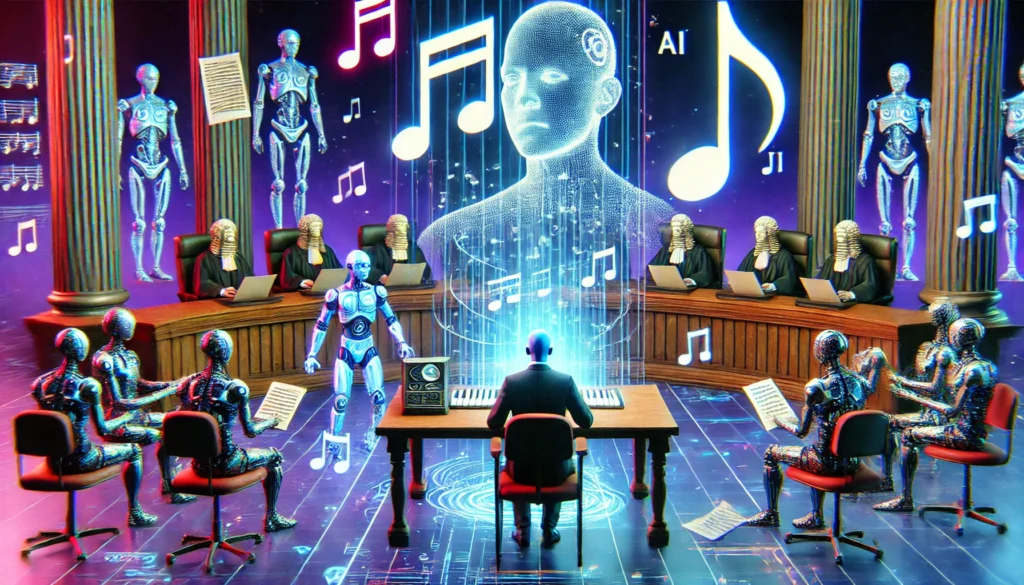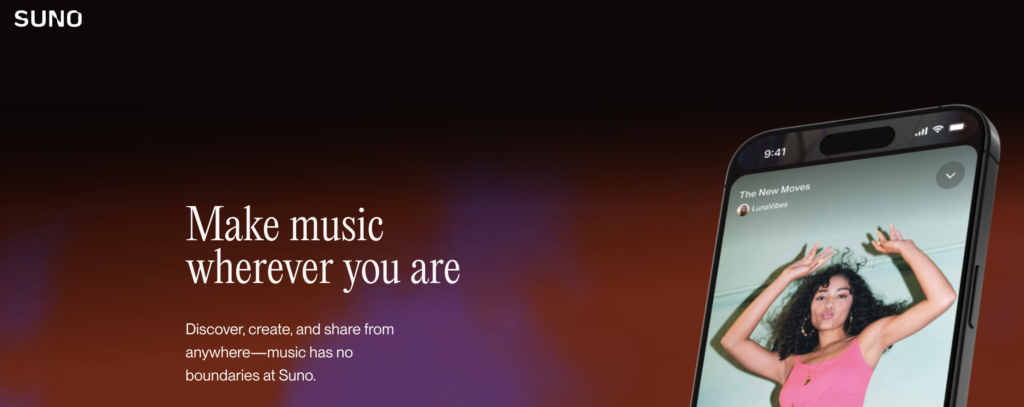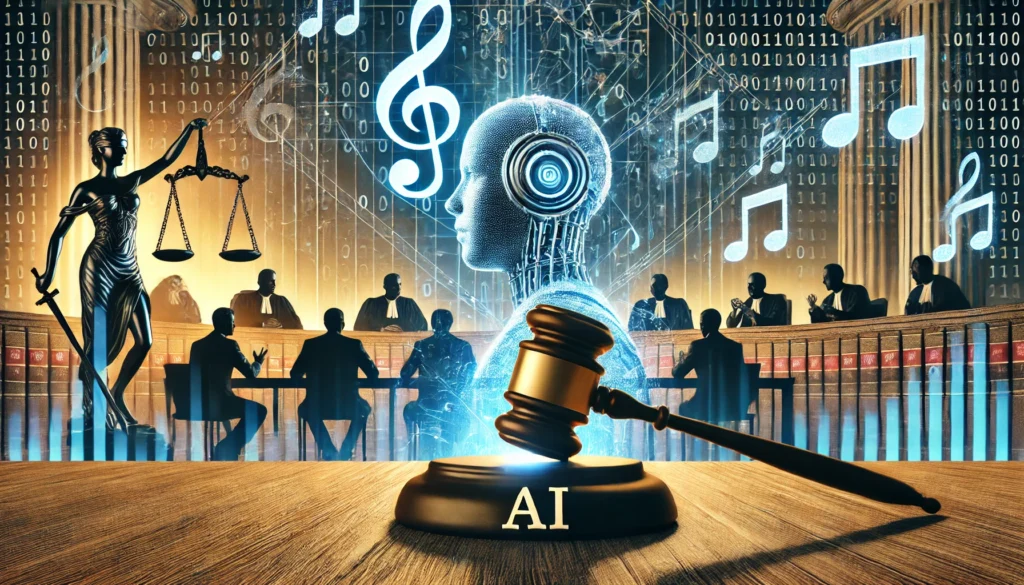Key Takeaways
- Understanding ownership is crucial – carefully review AI tool terms of service before creating
- AI-generated music copyright eligibility varies by country (US, EU, UK have different approaches)
- Document your creative process thoroughly to strengthen ownership claims
- Choose appropriate licensing models (exclusive vs. non-exclusive, royalty-free vs. rights-managed)
- Register works with PROs and consider blockchain platforms for establishing ownership
- Transparency about AI involvement helps build trust with clients and platforms
Introduction
The music industry is experiencing a fundamental shift as artificial intelligence emerges as both a creative collaborator and a disruptive force. Recent surveys indicate that more than 50% of today’s music producers have integrated AI tools into their creative process in some capacity, from generating simple melodies to composing complex orchestral arrangements.
Imagine spending weeks refining an AI-generated track only to discover you don’t actually own the rights to release it commercially. Or picture launching your music on streaming platforms only to receive a cease-and-desist letter from the company that developed the AI tool you used. These scenarios aren’t merely hypothetical—they represent real challenges faced by artists navigating this uncharted territory.
The legal frameworks governing AI-generated music remain both inconsistent and evolving. Different countries approach these questions with varying perspectives, and even major industry stakeholders disagree about how to classify and protect AI-assisted creative works.
Whether you’re experimenting with AI to generate ambient soundscapes, producing beats with machine learning algorithms, or using neural networks to compose orchestral pieces, understanding the legal landscape is essential to protecting your creative investments. This guide aims to demystify the complex world of AI music licensing, offering practical insights for artists and producers working in this innovative space.
ALSO: How To Make Money With Meditation Music

What is AI-Generated Music Licensing?
AI-generated music licensing encompasses the complex web of legal permissions, restrictions, and financial agreements that govern who can claim ownership of compositions created with the assistance of artificial intelligence. Unlike traditional music licensing—where a human composer clearly owns their creation—AI music exists in a legal gray area that continues to challenge conventional understanding of intellectual property.
When you compose a melody traditionally, copyright laws unambiguously recognize you as the creator. But what happens when you input parameters into an AI system that then generates a composition based on patterns it learned from analyzing thousands of existing songs? Does ownership belong to you, the platform developers, the original artists whose works trained the algorithm—or perhaps the AI itself?
These questions have real-world implications. For example, Playground AI, a popular music generation platform, specifies in its terms that while users retain ownership rights to their creations, the company reserves a non-exclusive license to use those works. Other platforms may claim joint ownership or impose restrictions on commercial usage. Without carefully reading these agreements, artists risk building careers on shaky legal foundations.
The landscape becomes even more complicated when considering international disparities. While some jurisdictions acknowledge the unique nature of machine-assisted creation, others attempt to force these new forms of artistry into existing legal structures that weren’t designed for such scenarios.
Furthermore, music licensing isn’t just about ownership—it encompasses performance rights, mechanical royalties, synchronization licenses, and more. Each requires careful consideration with AI-generated compositions. For instance, if you license an AI-created track to a film production, can you legitimately claim performance royalties when that film is broadcast?
Despite these challenges, millions of AI-generated compositions are already circulating in commercial spaces—from streaming platforms to video games to advertising campaigns. As this trend accelerates, developing a nuanced understanding of AI music licensing becomes not just advantageous but essential for creative and financial protection.
ALSO: Can AI Music Generators Replace Human Composers?
Can You Copyright AI-Generated Music?
The question of whether AI-generated music qualifies for copyright protection represents one of the most contentious debates in contemporary intellectual property law. The answer isn’t simply yes or no—it depends on numerous factors including the degree of human creative input, the specific jurisdiction, and evolving legal precedents.
At the heart of this debate lies the fundamental principle of “human authorship” that underpins most copyright systems worldwide. When an AI system generates music by analyzing patterns from existing works and producing new combinations, does this constitute creative expression worthy of copyright protection?
Regional Approaches to AI Music Copyright
United States: The US Copyright Office has taken a relatively clear position through its Compendium of Practices, stating that it “will refuse to register a claim if it determines that a human being did not create the work.” This policy was notably applied in 2018 when the office rejected a copyright claim for an AI-created image. For American musicians working with AI tools, compositions generated entirely by artificial intelligence—with minimal human direction or modification—likely fall outside copyright protection.
European Union: The EU presents a more complex landscape, with variations between member states. While generally maintaining the requirement for human creativity, some jurisdictions have shown greater flexibility in recognizing contributions from AI systems when substantial human creative choices are involved. The concept of “co-authorship” has gained traction, acknowledging that humans make creative decisions about inputs, selection, and refinement.
United Kingdom: The UK has adopted a somewhat unique approach through its “computer-generated works” provision in the Copyright, Designs and Patents Act 1988. This provision states that for works generated by a computer “in circumstances such that there is no human author,” copyright protection may be granted to “the person by whom the arrangements necessary for the creation of the work are undertaken.”
China & Japan: These countries have demonstrated greater openness to protecting AI-generated content. China’s copyright law revisions in recent years have increasingly accommodated technological advancements, while Japan has actively explored frameworks for protecting AI-created content as part of its broader AI innovation strategy.
Practical Implications
The real-world implications of these varying approaches appeared in 2019 when startup Endel signed a distribution deal with Warner Music Group for 20 albums of AI-generated ambient music. Questions immediately arose about copyright eligibility. The company ultimately listed its human programmers as “composers” to satisfy industry requirements, highlighting the practical challenges of fitting AI-created works into existing frameworks.
For artists working with AI tools, navigating this uncertain landscape requires a pragmatic approach. The degree of human creative input remains the critical factor across most jurisdictions. A composition that begins with specific human direction (such as providing melodic themes or stylistic parameters) and undergoes substantial human selection, arrangement, and refinement stands a much stronger chance of copyright eligibility than one created with minimal human involvement.
As we move forward, copyright laws will likely continue evolving to address these unique challenges. In the meantime, musicians should focus on documenting their creative contributions, understanding platform terms of service, and possibly seeking legal counsel for works with significant commercial potential.
Steps to License AI-Generated Music Legally
Navigating the process of legally licensing AI-generated music requires methodical attention to detail and understanding of both technological and legal considerations. Following these systematic steps will help position your AI-assisted creations for legitimate commercial use while minimizing potential legal complications.
1. Determine Ownership Rights
Before investing significant time in developing an AI-generated composition, carefully review the terms of service for every AI music tool involved in your creative process. These agreements vary dramatically between platforms. For instance, AIVA allows users to own the music they generate, but only under specific subscription tiers. Meanwhile, Boomy offers ownership rights but retains a percentage of royalties from tracks distributed through their service.
Pay particular attention to clauses addressing “derivative works,” “platform licenses,” and “commercial usage rights.” Some AI tools grant you full ownership but maintain a perpetual license to use your creations for their promotional purposes. Others may restrict usage in certain commercial contexts or require attribution.
Document your creative process thoroughly, including screenshots of parameter settings, dates of generation, and descriptions of your human contribution. This documentation serves two vital purposes: strengthening potential copyright claims and providing evidence of legitimate use according to terms of service.
2. Choose the Right Type of License
With ownership considerations addressed, select the appropriate license type for your specific goals:
Exclusive vs. Non-exclusive Licenses: Exclusive licenses allow you to charge a premium while transferring comprehensive rights to a single licensee. Non-exclusive licenses offer greater flexibility, allowing you to sell the same AI-generated track to multiple buyers for potentially higher cumulative revenue.
Royalty-Free vs. Rights-Managed: Royalty-free doesn’t mean free—it means the licensee pays once for perpetual use without additional royalty payments. Rights-managed licenses involve more complex terms specifying duration, geographic regions, and usage contexts, often requiring renewal fees but potentially generating ongoing revenue.
Creative Commons & Public Domain: For artists interested in building community goodwill or establishing visibility, Creative Commons licenses offer structured ways to share AI-generated music while retaining certain rights. Options range from CC BY (requiring only attribution) to more restrictive variants that prohibit commercial use.
3. Register Your AI-Generated Music
Once you’ve determined ownership and selected appropriate licensing models, registration provides an additional layer of protection:
Copyright Registration: While copyright registration for AI-generated music remains ambiguous in many jurisdictions, registering works with substantial human contribution can strengthen your legal position. In the United States, file with the Copyright Office by emphasizing the human creative elements involved.
Performing Rights Organizations: Registration with PROs like ASCAP, BMI, or SESAC allows you to collect performance royalties when your AI-generated music is played publicly. Each PRO has specific requirements regarding AI-created works, so confirm eligibility before submitting.
Blockchain Registration: Platforms like Audius and NFT marketplaces provide immutable records of creation and ownership that exist independently of traditional copyright systems. These technologies can be especially valuable for establishing provenance of AI-created works.
4. Sell and Distribute AI Music Legally
With ownership established and registrations complete, several distribution channels become available:
Stock Music Platforms: Specialized platforms like Pond5, AudioJungle, and Artlist have developed specific policies for AI-generated content. Some welcome such submissions but require disclosure of AI involvement, while others maintain stricter human authorship requirements.
Direct Licensing: Creating a dedicated showcase for your AI-generated compositions with clear licensing options on your own website gives you maximum control over terms and pricing but requires more marketing effort.
Streaming Services: Major streaming services like Spotify, Apple Music, and YouTube present more complex considerations for AI-generated music. Work with digital distributors who have clear policies on AI-generated works, and consider disclosing the AI’s involvement to prevent potential claims of misrepresentation.
Throughout this process, transparency about the AI’s role in creation helps build trust with clients and platforms while mitigating potential legal complications. Rather than concealing the technology’s involvement, emphasize your unique ability to direct and refine AI outputs to meet specific creative needs.
Where to License & Monetize AI-Generated Music
The landscape of platforms and marketplaces for licensing AI-generated music has expanded dramatically, creating diverse opportunities for composers and producers to monetize their technologically-assisted creations.
Top AI Music Licensing Platforms
Pond5 – One of the largest stock media marketplaces, Pond5 accepts AI-generated music with transparent disclosure. They particularly value unique, high-quality AI compositions that fill specific niches, such as distinctive atmospheric tracks or genre-bending experimental works.
AudioJungle – Part of the Envato Market ecosystem, AudioJungle accepts AI-generated content with appropriate disclosure, though their review process has become increasingly selective. Their royalty-free license structure makes this platform particularly attractive to YouTube creators and small businesses.
Artlist – With a subscription-based licensing model that appeals to filmmakers and content creators, Artlist’s curation team actively seeks fresh, emotionally resonant compositions—including AI-generated works—that serve narrative storytelling needs.
Specialized AI Music Platforms – Companies like Soundraw and Beatoven.ai not only provide tools for creating AI music but also operate marketplaces where composers can monetize their AI-assisted creations, often with more favorable revenue splits than traditional stock music sites.
ALSO: Top AI Generators to Try
Direct-to-Client Licensing
Freelance platforms like Upwork and Fiverr have seen growing demand for custom AI music creation services. Successful freelancers position themselves not merely as operators of AI tools but as creative directors who can translate client briefs into targeted inputs and skillfully refine AI outputs.
Developing your own independent licensing portal offers maximum control over terms and pricing while eliminating platform commissions. This approach works particularly well for those specializing in specific genres or functional categories where targeted marketing can reach clearly defined customer segments.
Licensing for Specific Industries
Film, TV & Advertising – Sync licensing agencies like Music Bed, Marmoset, and Epidemic Sound have begun cautiously incorporating AI-generated compositions into their catalogs, particularly seeking tracks that fill stylistic gaps or offer unique sonic textures.
Gaming – Video game developers increasingly seek adaptive music systems that can respond dynamically to gameplay—an area where AI-generated compositions offer unique advantages through their parametric flexibility and potentially infinite variations.
Podcasts & Digital Content – The podcast boom has created substantial demand for distinctive background music that won’t trigger content ID systems. AI-generated compositions offer an advantage here, as they can be stylistically familiar without directly referencing existing copyrighted works.
Emerging Technologies
NFTs & Blockchain Platforms – Platforms like Async Music enable the creation of programmable music pieces that exist as collectible assets while generating royalties through various usage mechanisms. These technologies allow composers to tokenize their AI-generated works, creating scarcity and potential investment value.
Education Sector – Music production schools, online course creators, and educational content developers seek demonstrative examples of AI music for teaching purposes. Licensing packages specifically designed for educational use can command premium prices while establishing your expertise.
Consider developing a strategic portfolio approach rather than relying on a single platform or licensing model. Diversification across multiple marketplaces with tracks specifically designed for each platform’s unique audience can maximize both exposure and revenue potential.
Legal Challenges & Future Trends in AI Music Licensing
The legal landscape surrounding AI-generated music resembles a constantly shifting terrain, where established principles of intellectual property law collide with unprecedented technological capabilities. Understanding both current challenges and emerging trends provides crucial context for creators navigating this complex ecosystem.
Ongoing Legal Battles
Several high-profile legal battles have begun establishing precedents that will shape the future of AI music licensing. One consequential case involves Holly Herndon’s dispute with Geffen Records over an AI voice clone trained on her vocal recordings. The case raises fundamental questions about whether voice recordings constitute protected intellectual property and whether training AI systems on copyrighted materials constitutes fair use or infringement.
Major AI companies like OpenAI and Google DeepMind face mounting legal challenges regarding their training methodologies. Class-action lawsuits allege that these companies have used copyrighted materials without proper licensing, potentially undermining claims to produce “original” AI-generated content.
Royalty Distribution Challenges
The question of royalty distribution for AI-generated music remains particularly contentious. Traditional music industry structures rely on clearly identified human composers receiving compensation through established collection societies. AI-generated music disrupts this model by introducing ambiguity around creative contribution. Some advocate for new royalty models that recognize both human curators and AI system developers, while others argue that existing frameworks can accommodate these new creative processes.

Blockchain Solutions
Blockchain technology has emerged as a potential solution to several key issues in AI music licensing. Smart contracts—self-executing agreements with terms directly written into code—offer mechanisms for transparent, automated royalty distribution that could accommodate the complexities of AI-assisted creation.
Platforms like Audius, Sound.xyz, and Royal have pioneered blockchain-based music distribution systems that record immutable ownership data on public ledgers. These technologies offer particular advantages for AI-generated content by creating verifiable records of creation date, ownership claims, and licensing terms.
Future Predictions
Looking toward the next five years, several trends appear likely to shape the evolution of AI music licensing:
- Accelerated development of specific legal frameworks addressing AI-created content, as countries competing for leadership in artificial intelligence establish clear, workable regulations
- Industry self-regulation through sophisticated attribution and rights management tools, as companies develop detection systems and specialized metadata standards
- Specialized performing rights organizations focusing exclusively on AI-generated content, establishing standardized frameworks for registration and royalty collection
- Market segmentation based on the degree of human involvement, with different valuation models for fully automated generation versus human-AI collaboration
For creators working in this space today, flexibility and adaptation remain essential. Staying informed about emerging legal precedents, maintaining detailed documentation of creative processes, and diversifying licensing approaches can help navigate uncertainties while positioning yourself advantageously as the field matures.
Conclusion
The integration of artificial intelligence into music creation represents a paradigm shift comparable to the introduction of electronic instruments or digital audio workstations—a transformative technology that simultaneously expands creative possibilities and challenges established ways of working.
The question of “who owns AI music” defies simple answers, existing instead along a spectrum influenced by the specific AI tools used, the degree of human creative direction, and the jurisdictions involved. While complete legal clarity remains elusive, practical approaches to establishing and protecting ownership have emerged. Documenting your creative process, carefully reviewing platform terms of service, and emphasizing human contribution throughout creation all strengthen your position as the rightful owner of your AI-assisted compositions.
Copyright eligibility for AI-generated music varies significantly across international boundaries, creating challenges for global distribution but also opportunities for strategic registration in jurisdictions with favorable interpretations of AI-created works.
The licensing landscape continues expanding, with traditional stock music platforms, specialized AI content marketplaces, and direct-to-client channels all offering viable paths to monetization. Each approach presents unique advantages and limitations, suggesting that diversification across multiple licensing models may provide the most sustainable revenue strategy.
For artists and producers engaged with AI music tools today, maintaining awareness of legal developments while focusing on creating distinctive, high-quality compositions represents the most sustainable approach. Rather than concealing AI’s role in your creative process, consider embracing transparency—positioning yourself as an expert in directing and refining AI outputs to achieve specific creative goals.
The most successful AI music creators will likely be those who view these tools not as replacements for human creativity but as collaborative partners that expand possibilities. By understanding both the potential and limitations of current licensing frameworks, you can make informed decisions that protect your creative investments while exploring the unique expressive capabilities these technologies offer.

